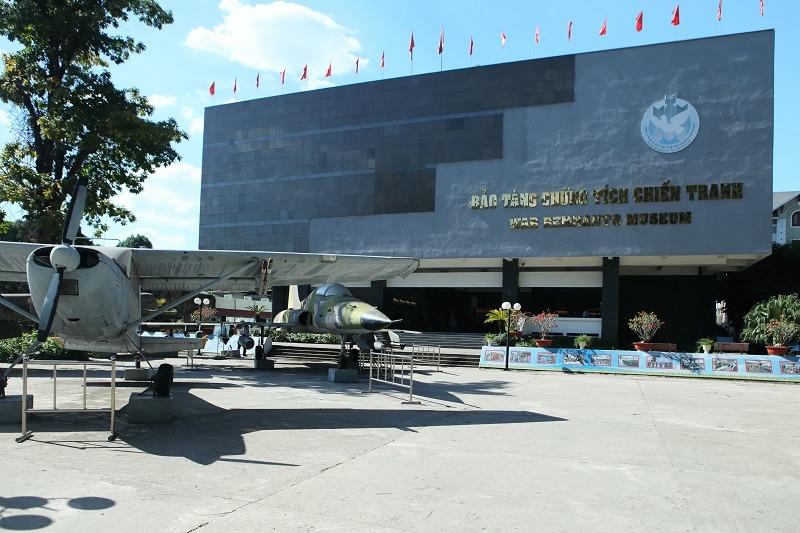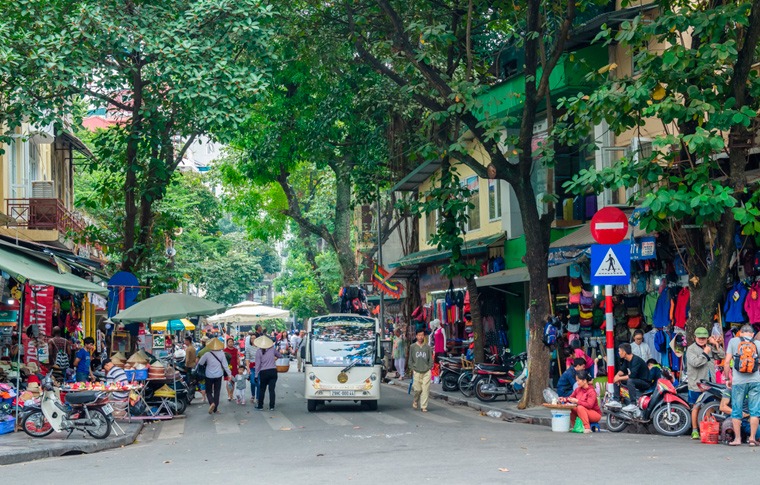10 Red Flags When Traveling to Vietnam

Welcome to Vietnam, one of the most exciting Southeast Asian countries! With the rise of Vietnam’s economy in recent years, tourism also took flight, putting the countries’ top destinations such as Ho Chi Minh City, Hanoi, Ha Long Bay, etc. on the destination list of world travelers. However, just like in every other famous tourist destinations, there are certain people who will try to profit off tourists, preying on them like vultures. To protect yourself and your companions on your trip to Vietnam, and to ensure that you can fully enjoy the trip, here are 10 red flags you need to watch out for on the trip.
1. Motorbike Thefts

Although the police generally keep good public order in Vietnam, sometimes motorbike thefts do happen, and the thieves are often so fast it would usually be impossible to catch them. When you are in Vietnam, do take care to lock your bikes properly, and keep an eye out on your bike whenever you take a sip of coffee from the sidewalk or eating something.
There are also certain cases where motorbike thieves will attempt to set up certain scenarios to snatch your bike when you’re not paying attention. For that reason, when you are on the street, if you see a suspicious commotion, it’s best to leave the area immediately to avoid scams.
2. Wearing A Lot Of Jewelry With You While Going Out

Bag snatchers are rare nowadays, but better safe than sorry. Wearing a lot of jewelry on you when you’re outside paints you as a potential target for local criminals, so avoid doing this in a crowded area. If you are heading towards safe travel spots, such as a hotel, it is possible to wear some jewelry, as the security is often very tight.
As a rule of thumb, keep all your jewelry away when you enter a cab or a taxi. It would be better if you could keep an eye out on the roads as the cab drives away to ensure that you are not being led to an undesirable location.
3. Price Scams When You Buy From Local Vendors

Unfortunately, there are some local vendors who will go at length to scam you if they think you are a tourist. They will often charge you an exorbitant price for items that would have cost you much less under the assumption that you, as a foreign tourist, will not understand that you are being scammed.
It’s pretty difficult to determine whether you have been scammed or not, so the best way to avoid these scams is to bring along a local friend along with you when you are out buying something. If you can’t do so, it’s a good idea to double-check the market’s price for essential items, either by asking local friends or asking on local forums, before you go out to grab a tasty street snack. This way, you will know whether you have been scammed or not and will be able to respond accordingly.
4. Riding Your Motorbikes On The Street

Just like in most modern Asian countries, the traffic in Vietnam’s cities can get a bit overwhelming for tourists, especially during rush hours. Although there are clear signs and traffic lights, the traffic is quite chaotic as everyone goes about without obeying traffic laws. There have been terrible accidents and casualties even in big cities such as HCMC or Hanoi. Traffic jams are pretty commonplace, especially in the city centre area at rush hour because everyone tries to rush home on time, so you should definitely avoid going on a sightseeing tour at these hours.
As foreign tourists, you should reserve some time to acclimate yourself with the local traffic. Spend some time practice riding your motorbike in a non-crowded area, preferably with a local friend. Also, you will have to keep in mind that you must wear a helmet when riding a motorbike in Vietnam. Failure to comply could result in some issues with the local traffic patrol or even a fine.
5. The Risk Of Unexploded Ordnance

Vietnam was a battlefield for a large part of the 20th century, and the scars of war still run deep in the country, especially underground. It is estimated that as much as 150,000 tonnes of unexploded ordnance are still buried deep within the soil of the country. However, the efforts led by the government have largely cleared urban areas and well-trodden streets of this unexploded ordnance, leaving only some rural areas potentially hazardous.
If your trip involves traveling to the countryside, exert extra caution. Whenever you see unexploded ordnance such as shells, bombs, etc., do not touch them under any circumstances. Notify your guide so that they can let the local authority know and deal with the situation. It’s also advisable that you should not enter old bomb craters as well, for fear that there might be an unexploded bomb in the crater.
6. Having Too Much Street Food

Street foods are certainly one of the best indulgences in Vietnam, with a wide variety of shapes and sizes. However, you should keep in mind that food safety can be an issue in Vietnam, especially with street hawkers. For that reason, when you enjoy your Vietnamese street food delights, don’t forget to keep watch on your health and only dine at safe vendor spots or restaurants to avoid food poisoning.
It would also be a good idea to understand that some Vietnamese foods might not be up to your taste, and some can be considered a bit bizarre by travelers. For this reason, you should always ask your local guide what the dish you are about to eat is to avoid eating something you might consider repulsive.
See more at 10 Best Restaurants in Ho Chi Minh City
7. Straying Into Restricted Areas

Just like in other countries, there are certain restricted areas that are off-limit to foreigners. These areas are located all over the country, but most would be in the villages at the Central Highlands. If you are planning on visiting a village off the beaten track, make sure to ask the local authority to see if you are allowed to do so first, as you could face a prison sentence if you are spotted near these areas. In addition, it would also be a good idea to bring along a few local friends on your trip to rural areas so that you will know what to do if the situation goes south.
Dressing inappropriately when you visit certain landmarks.
Vietnam is, in its heart, still quite a traditional country, so, as tourists, you are expected to respect and follow the local customs, including the dress code. Wearing shorts or a miniskirt on your trip to a grand pagoda or a monument will earn you unwelcome eyes from locals, and some pagodas even ban wearing revealing clothes outright. It’s a good idea to wear knee-length clothes, and if you don’t pack along a long dress, there are, sometimes, vendors in front of these landmarks selling long robes to cover your entire legs. It’s definitely not the most desirable solution, but it certainly does its job well!
8. Dressing Inappropriately When You Visit Certain Landmarks

Vietnam is, in its heart, still quite a traditional country, so, as tourists, you are expected to respect and follow the local customs, including the dress code. Wearing shorts or a miniskirt on your trip to a grand pagoda or a monument will earn you unwelcome eyes from locals, and some pagodas even ban wearing revealing clothes outright. It’s a good idea to wear knee-length clothes, and if you don’t pack along a long dress, there are, sometimes, vendors in front of these landmarks selling long robes to cover your entire legs. It’s definitely not the most desirable solution, but it certainly does its job well!
9. Getting Into Any Taxi

Taxis in Vietnam are generally safe and fair, provided that they do show you the fare you will have to pay. There are some fake taxis or amoral taxi drivers who will overcharge you much higher than you would have to pay, and these taxis are often found near airports or famous travel destinations. To avoid these taxis, it is often a good idea to call taxis using a transportation app such as Grab or take only the cabs belonging to reputable local taxi companies such as Mai Linh, etc.
When you enter a taxi, the fare should start somewhere between 8,000 VND and 20,000 VND. If the fare clock starts off a little bit weird, or if the driver tells you how much to pay before he even moves the taxi, politely decline and leave. You should not enter a cab with a stranger under no circumstances.
10. Traveling By Buses Or Coaches

Buses and coaches are the main modes of transportation for inter-regional travel in Vietnam, and there have been reports about petty crimes on them. As tourists, you will draw unwanted attention to yourself when you use buses or coaches, so exercise extra attention whenever you use them for on your travel. A good idea would be to use fanny packs or secret pockets to put in your essential documents. Split up your money if necessary to avoid losing everything should a thief decides to spring into action.
Vietnam is a beautiful country, and there is no short of things to behold and regions to explore while you are here. However, for a safe and enjoyable trip, always exercise caution when you travel in the region, and if there are certain questions you can’t seem to find online, always ask your local guide. If you are looking for the best advice from professional tour guides, don’t forget to give us a call! We hope you will enjoy your trip!
Writer: Viet Nguyen